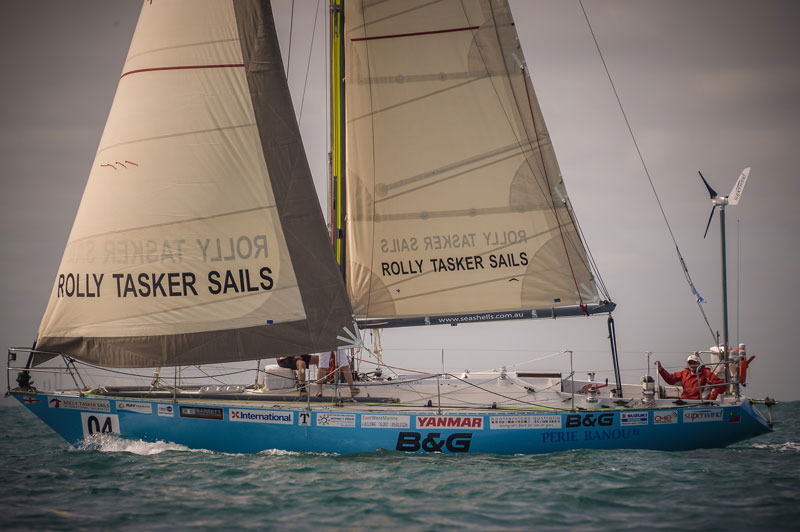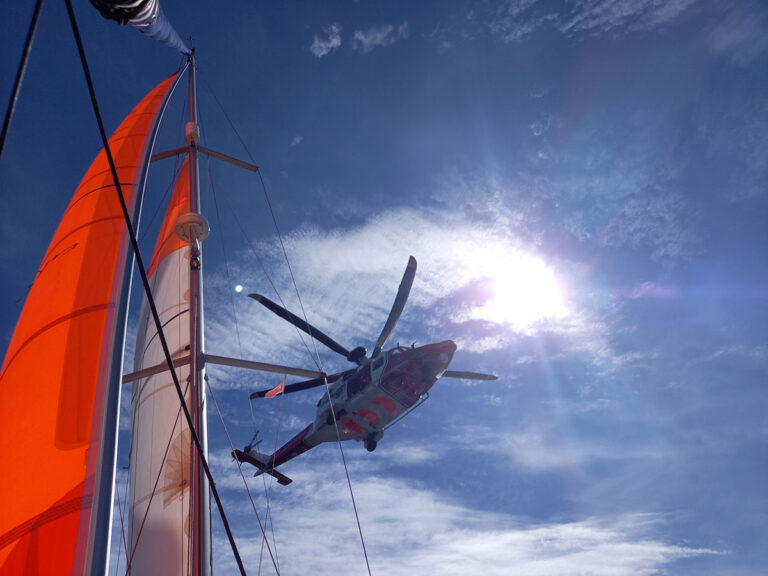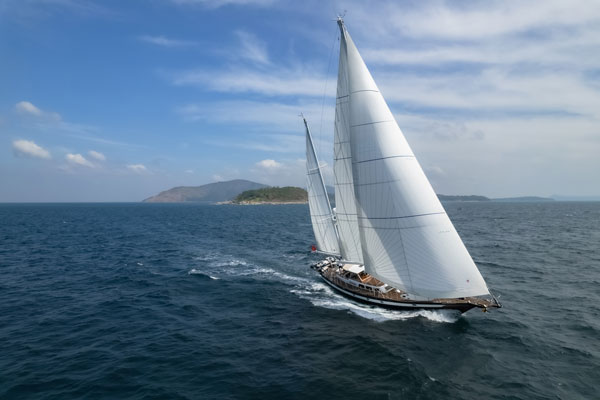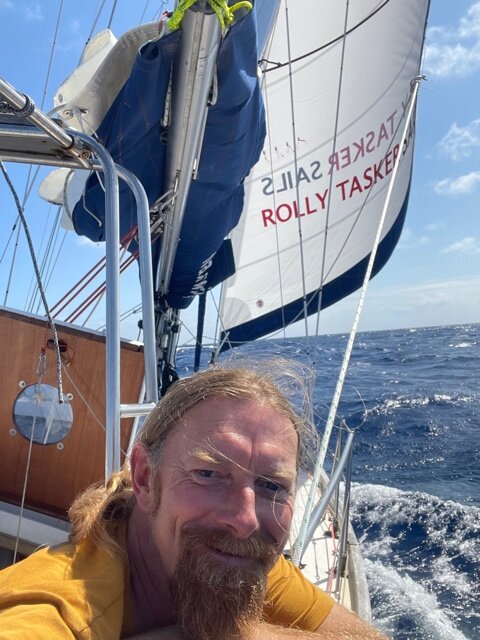This interview was made with Jon before he started off on his 11th circumnavigation, again with his usual suit of Rolly Tasker Sails that did not fail him at any time over the course of this long voyage. During his stop in Bundaberg he said: “After 19,000 miles in often strong and sometimes very severe weather, there was no need to even take the sails off the boat for servicing. Perfect! With these sails I can simply continue on.”
Why Rolly Tasker Sails?
Jon Sanders: It all started out when I was a lad and met Rolly in Perth. He was a state sailing champion, a national champion, a world champion and an Olympic medalist. He built his own boats and designed some of them. He was a pretty smart guy who took an interest in me at a young age. A real mentor. Well naturally I started using his sails. And I have done so ever since.
My philosophy is that if you’ve got something that doesn’t fall apart, that drags you across the world in some pretty tough conditions, that then gets you back and it all still works, why change? And of course they are a high quality product that has stood the test of time since the 1960’s.
Your Current Sail Wardrobe on Your Boat “Perie Banou II”, an S&S 39?
Well they are all Rolly Tasker sails. Nothing special, nothing fancy. I’ve got a full hoist mainsail, a couple of small furling headsails, a #3 and #4, a storm jib and trysail and a couple of spinnakers. I use my spinnaker pole or a jockey pole to pole out the headsails if I’m running down wind.
I do use a Dyneema inner forestay with a multi-purchase system, but I don’t run a sail on it, plus runners – all basically to strengthen the rig.
Increasingly I’m going for smaller Tasker headsails for ease of handling. Circumnavigations aren’t a race, its all about balance and ease of sailing. In fact I just cut my 130% headsail down to a #3 which at 80 years of age makes it that much easier for me to handle the boat.’
Spinnaker or Asymmetric?
I’m comfortable with spinnakers on a pole which I can adjust as needed whereas asymmetrical spinnakers don’t give me the downwind range I like. As much as possible I’m looking to run with the wind not across it. When it gets too far across the beam I stick with a headsail, may be poled out.
Why Cream Coloured Sails?
It’s just high-quality Dacron but in a beige coloured cloth. Naturally I used white sails as we all did for many years but I find the beige cloth reflects less. When I’m out there day after day, reflection off the sails plays havoc with my sight. I’ve had 2 cataract operations no doubt due to glare off the ocean and sails.
Leech Battened, Semi-Battened or Fully Battened Mainsail?
I’ve used all of those batten arrangements but my preference is for leech or semi-battened mainsails when sailing solo or short- handed. If you break a full-length batten in a jibe then chances are it will puncture the sail. You then have to have a spare full-length batten on board and are up for a sail repair at sea.
If you’re racing around the buoys then it’s a different story as your looking for best sail shape for peak performance but when cruising it’s all about reliability.
Semi-battened is a good compromise where you can increase the roach and sail area a little while having good leech shape.
Your Key Requirements for Your New Sails?
I left that to the Rolly Tasker loft sail designers. They know what they are doing, are aware of my sailing conditions and requirements, and build high quality sails to suit.
Do You Get Anything Special?
Not that I’m aware of. It’s what they call their Premium Offshore specification in a high-quality American Dacron, which has a lot of strengthening around the head, tack and clew as well as at the reef points. But I understand that this is standard on Rolly Tasker’s Premium Offshore sails.
My current mainsail is 9.5oz Dacron I think, which is a bit heavy for the size of the boat but good for the purpose that I put it too. Polyester sails are good, the sails I have absolutely get there and don’t have delamination problems due to the extremes of climate that I experience.
Three Reefs in the Main
I do however always insist on 3 reefs, the 3rd being a deep one, half way up the luff, to save having to hoist a trysail which can be a drama single handed in a blow and swell. I also carry a trysail but if I can get away without hoisting one then that’s a bonus.
I think the roach on the current mainsail is a bit big. Next time I’ll specify a smaller roach, again for ease of handling.
Possibly a small difference to a standard sail is that I have the batten pockets stitched closed to avoid any problems with losing battens at sea.
Luff Cars or Slides?
I use slides as per the original specification for the boat. Too many problems with cars, just another thing that can go wrong.
I mix a combination of Vaseline and clean engine oil to grease the slides. While it can stain the sails a bit it means the sail just goes up and down easily.
Do You Specify a 2-Ply Leech?
I haven’t used a 2-ply leech in the past but my current mainsail has a two-ply. I wouldn’t do it again as it makes the leech too heavy especially in light air and the sail doesn’t set as well. Next time I’ll tell them to stick to single ply leech.
As I mentioned Tasker’s standard Offshore specification has a lot of strengthening which I think is adequate.
Sail Quality and Life Is Important for the Cruising Sailor. Tell Us About the Problems That You’ve Experienced with Your Tasker Sails.
Not much of a story there. The only damage I’ve ever experienced with Rolly Tasker sails is to destroy the UV strip on the headsails but that’s over a long period of time and they do get a lot of use.
I’ve never had a problem with any of my Tasker sails. I mean that seriously, I’m not just saying it.







